Forest Survival: Facing Mother Nature Properly
We have to say from the start: forest survival is not easy! There are a lot of things that can, and in fact will, go wrong if you let them. So, the best thing you can do in any survival situation is to be prepared no matter when and where you find yourself in need to survive. Just like our ancestors before us, we too can tame Mother Nature and not only survive but also thrive.
[the_ad_group id=”21″]
There are some key things that you will have to remember about forest survival in particular. Make no mistake about it, they will save your life if done properly.
Preparation Makes Forest Survival Possible
The very first thing that you will have to do is make sure that no matter what happens, you are prepared for the worst. This can be achieved rather easily actually, because you don’t need much in order to survive.
First And Foremost, Your Basic Tools
Multi-tools, like the popular Swiss army knife, are usually preferred because of the fact that they can provide you with a rather large arsenal of tools in a rather compact and portable package.

To make things even better, there are a lot of options and a lot of alternatives when it comes to holders, from the traditional belt clip to the more unconventional ankle strap, there are a lot of ways in which to attach these tools to your gear without having to worry about them constantly.
Second On Your Prep List Is Water
Without water, dehydration will quickly set in, making even the most basic of tasks or action increasingly hard. There are many ways to make sure that you will have a small supply of emergency water if the need arises.
There are large canteens of water that can hold up to 4 liters (1 gallon). These canteens are easy to carry around, with a shape that helps it fit in with standard survival gear and not get in your way while getting around.
Third On Your List Is Food
It goes without saying that food is vital for survival. However, it is ranked lower than water simply because the human body can survive a lot longer without food than it can without water.
Things are a lot easier with food though, because you can actually get dehydrated food packets that weigh next to nothing, can be packed tightly together and contain an entire meal’s worth of calories and nutrients in one single packet. Check out our list of the top camping food that you can bring for nourishment.
Don’t expect anything when it comes to the taste of the food though – it’s meant to keep you alive, not satisfied. That being said, it is often a good idea to have on you at least 1 weeks’ worth of emergency rations, in case situations get hairy.
Fourth On Your List Are Lighting And Signaling
When it comes to lighting it’s rather simple. Grab a flashlight, either battery powered or mechanically powered (crank charged). The choice is yours.
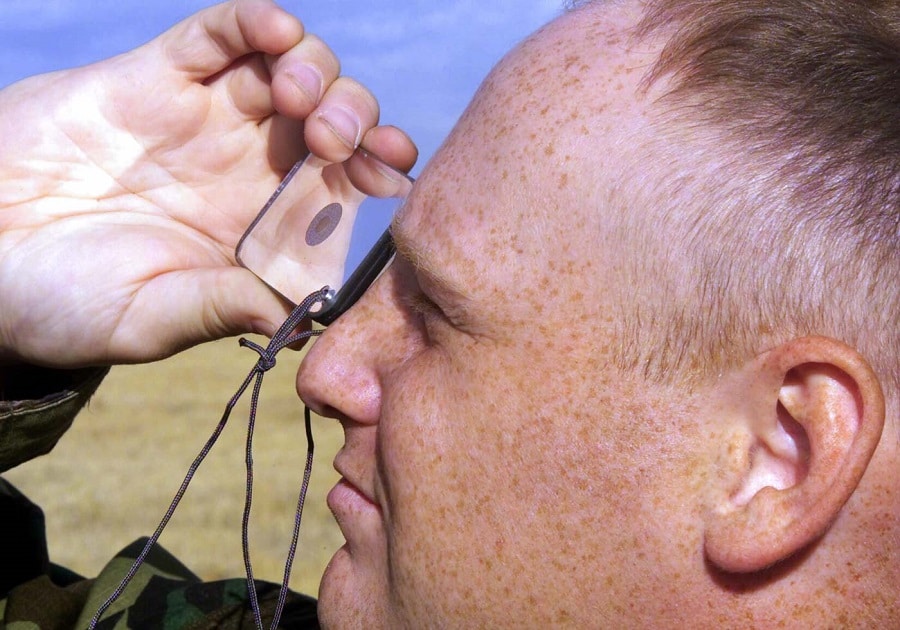
When it comes to signaling, there are a lot of options at your disposal. Chem lights, flares, flare guns, smoke signals, portable sirens, and the list goes on. They are also quite cheap as well, the vast majority of them can be found at hardware stores, hunting shops and various other outdoor activity related shops.
It is also worth mentioning here that you will need to add a piece of flint to your gear. The flint will spark when chipped at with a knife, making it easy to both signal for help and light a fire. For the best tactical flashlights that won’t let you down, see our must-read article on this topic.
Fifth On Your List Is A Notebook And A Pen
This is to keep your mind busy and keep you sane. You can draw, take notes, keep a journal, do basically anything that engages your brain. Mental health is just as important as physical health, often helping you maintain high morale and a strong will to survive.
Sixth Thing On Your List Is Research
The last thing you will have to do before you can be completely sure that your prep work is complete, is to research the area that you will be going in. Check the following questions and do your research accordingly:
- What plants will you encounter?
- Are there any edible plants, fruits, berries, roots, and so on?
- Are there any animals that you can hunt there?
- Are there any predators that you will have to worry about?
- What is the lay of the land? Is there a map that you can have at your disposal?
- Are there any flowing water sources around?
Proper preparation can and will save your life as well as make things a lot easier for you in the long run.
Whatever Happens, You Need to Keep Calm
Keeping calm is key in every situation. Make no mistake about it, it is incredibly hard, especially when facing a possible nature survival scenario. However, you will still have to find a way to keep your cool.
Panic and fear usually lead to problems and mistakes. And, when facing a survival situation, mistakes can cost lives. So you will have to do anything and everything within your power to keep your composure and keep calm.
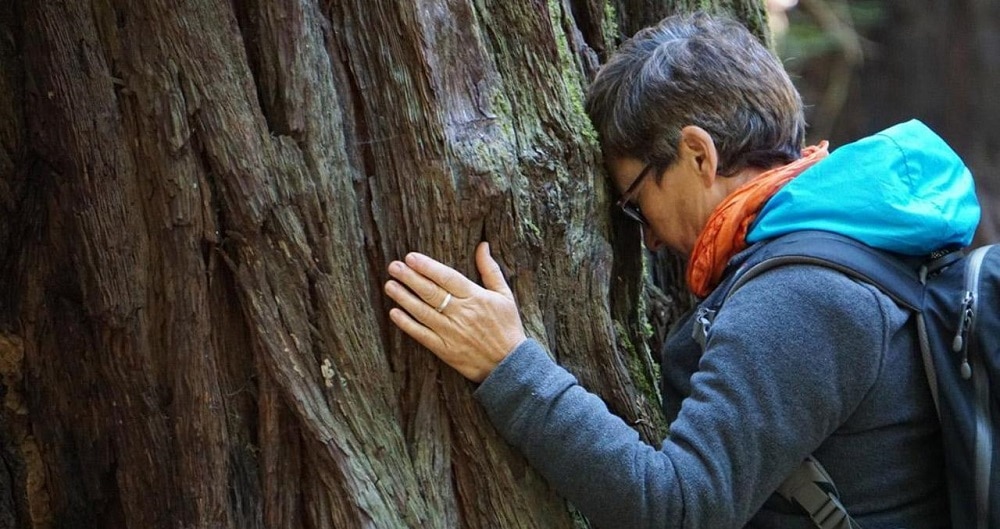
There are various ways of doing that so we listed below several techniques that might be of help:
- Focusing on an inanimate object
- Steady breathing
- Sitting down
- Biting your lower lip
- Holding on to something tightly
- All of the above
There are 2 main types of survival situations: planned and unplanned situations. In both cases, it can be very easy to lose your composure.
Unplanned Survival Situation
In unplanned survival situations, often times the first thing that we do is panic. A surge of adrenaline and fear is shooting through our bodies and we go from calm to neurotic in about 2 seconds. However, once the initial shock wears off, or we manage to get a grip and hold our composure and a balance is usually formed.
Planned Survival Situations
In planned survival situation, fear is a constant concern. It tends to creep up on you and build up over time. We tend to worry constantly, feeling outside our comfort zone, outside the controlled environment that is our home.
Again, make sure to do everything within your power to hold your composure and you will be able to balance yourself out.
Your Survival Approach
The very first thing that you will have to do when out in the wild is to build a shelter and a campfire. This will keep you protected from the elements, warm and comfortable, while at the same time keeping your morale high.
Still, you have to take a very important decision regarding your survival approach. There are two possibilities:
- sitting tight and waiting for rescue
- moving out and finding your way back to civilization.
Sitting tight
It is often advised to sit still and wait for rescuers to find you. However that is not usually the case; in fact there are a limited number of scenarios in which this rule actually applies.
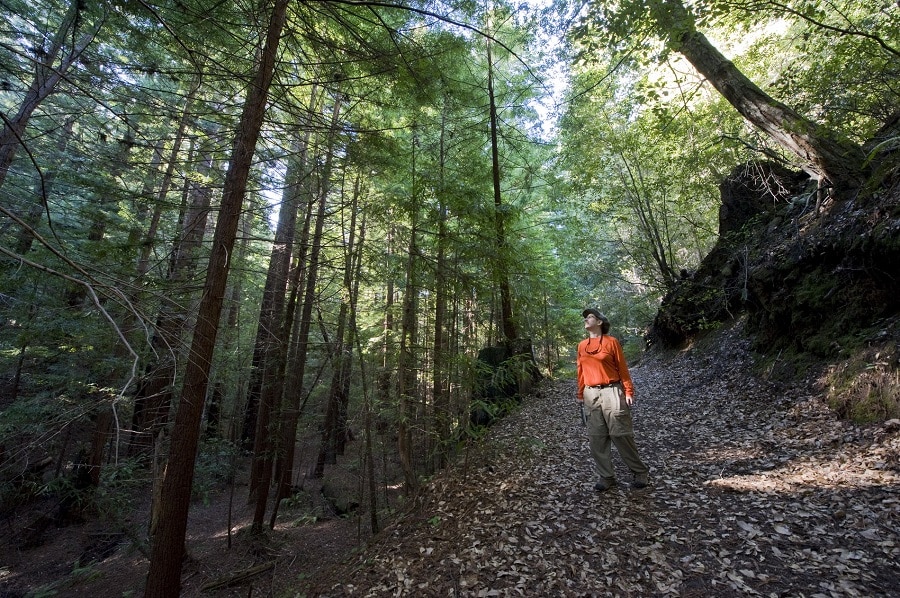
Usually it is recommended to sit tight somewhere obvious and where you can be seen. Preferably you should find a location from where you can signal for help or you can find/see a patrol or other people passing by. In this case you will want to build a nice sturdy shelter. A lean-to style shelter with thick wooden support beams and thick foliage covering it, insulting you from the elements sounds perfect.
See also: Best Hiking GPS: Don’t Lose Your Way
Make sure to build a hearty camp fire and protect it using stones placed around it. Add some minor covering so that it does not extinguish in the case of rain. Make sure that the covering is high enough to not get burnt by the fire yet low enough to protect it from the rain.
Heading out
This is often recommended for unorganized leisure activities gone wrong. Situations where you are not expected or people don’t really know where you are as well as when you would be supposed to return. In these situations, sitting around and waiting for rescue is a generally bad idea because said rescuers have little to no information about your location. Not to mention the fact that it usually takes quite a bit of time before search and rescue teams are even notified in the first place, if at all.
[the_ad_group id=”22″]
If you choose to head out, build a simple style shelter, resembling a tent or tepee made out of thin wood support beams and a combination of cloth and foliage for insulation and protection. Make sure that it is light, foldable and as easy to set up as possible.
Get Your Bearings
You need to be in control of the situation all the time, and one of the most important aspects of that is knowing where you are as well as what is in your vicinity. Find a high vantage point or climb a tree to the top in order to get a better view of the land. Before any trip, make sure you know how to use a compass, a basic survival skill that you must possess, which we have articulated in an earlier piece.
Find any kind of landmark that you can use as a guide. This can be rivers, hills, distinctive details, anything and everything that can be seen from a distance and is not mobile in any way, shape or form.
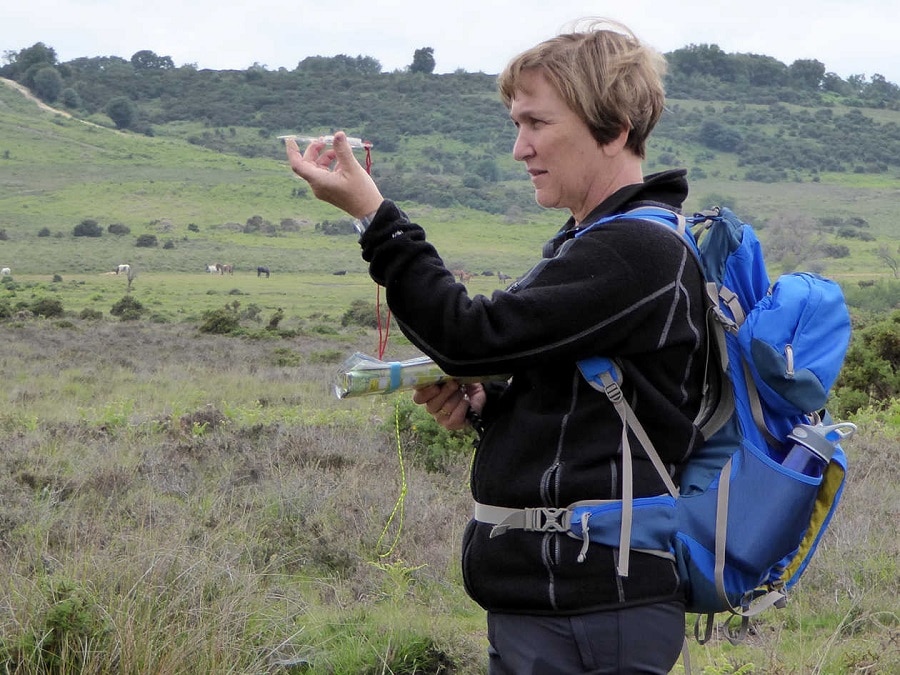
If you are going to sit tight, this will help you identify key elements that will help you survive, as well as help you become a lot more familiar with your surroundings. If you plan on moving out, these landmarks and these bearings will help you maintain a stable direction as well as not get lost (even more).
A word of advice: don’t try and guide yourself using the stars. You won’t be able to see the vast majority of them in the woods and you won’t be able to get your bearings properly at night.
Manage Your Resources Carefully
No matter how much you prepare, no matter how careful you are and how thorough you can be, your wellbeing will constantly be on the line. The biggest risk is represented by the very resources that you depend on in order to survive. Actually, the risk is represented by the lack of resources.
Even though you have your emergency rations, at the end of the day that is what they are: supplies that need to be used in case of emergency, not as soon as possible. That being said, in order to proper manage your resources, you will have to find a source of fresh running water. A spring would be preferable but anything will have to do.
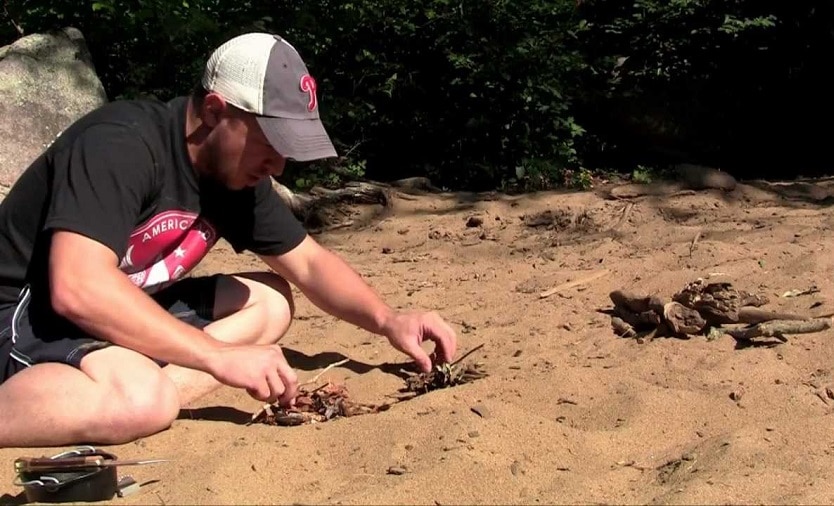
Don’t trust the water though, no matter how clear it is, you will still have to boil it in order to make sure you don’t catch something. The last thing you want to do is get sick and weaken yourself. A canteen can be used to boil water directly over a fire if it is made out of metal. If not, use a metal cup or pan.
After you’ve secured a water source, you will have to secure food. You have multiple ways of going about this. You can eat berries, fruits, roots and certain plants to survive. However if you have the means to, you should also add some meat to your diet. See if you can fish in a river either via the traditional pole and lure tactic or simply cornering them and scooping/spearing them.
Alternatively, see if you can hunt animals using a combination of hunting weapons and traps that you can craft yourself using sticks, ropes and if need be even shoe laces.
If you manage to fish or hunt something, make sure that you prepare and cook the meat thoroughly over a fire. Slice through into the meat and check to see if it is evenly done. The last thing you want is to catch the stomach flu, indigestion, or worse, dysentery.
Always Stay Visible
Believe it or not, often times people that are in a survival situation get spotted by someone else. Either random passersby, rescue teams, service men, even forest rangers can find you but only if you are visible.
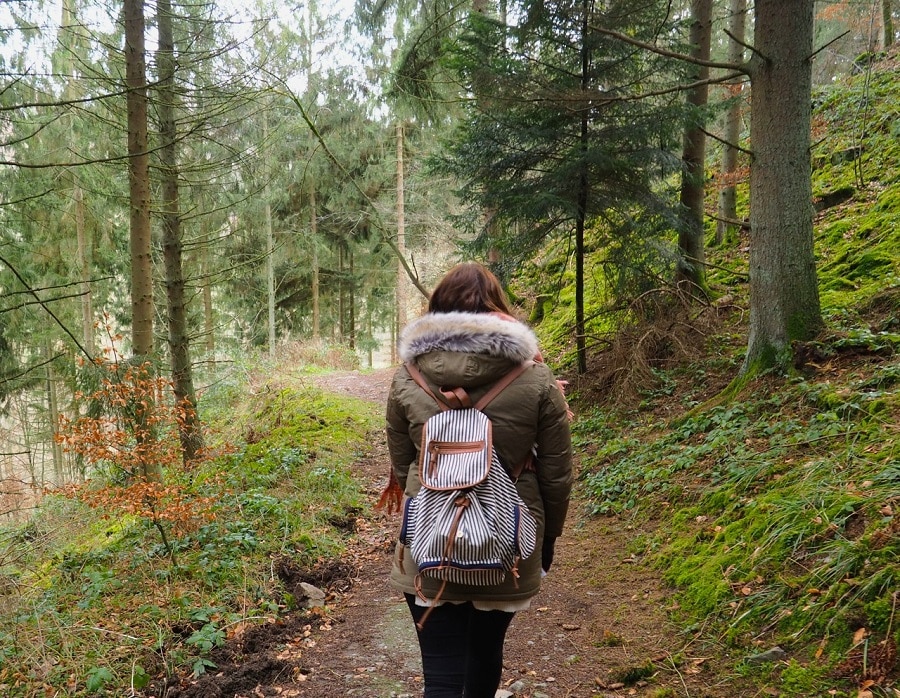
Make sure to stand in clearings, by rivers and literally make yourself as visible as possible. Not to mention the fact that it is a lot easier and a lot more efficient to signal people, planes, helicopters and so on, from a visible and open place.
Seeing as you will be dealing with a forest survival situation, you will have to be on the lookout for clearings and other such large open areas. If you find a large stream or a river, you should follow it. Chances are either you will bump into someone or someone will bump into you.
There is one big drawback with this tactic. If you happen to find yourself in a forest that is known to be inhabited by wild animals, such as bears, wolves and so on, you might run the risk of running into them in those clearings. So keep your eyes open and be on the lookout.
Lighting A Fire
It goes without saying that one of the most important skills that you can have at your disposal when dealing with a survival situation is the skill of lighting a fire.
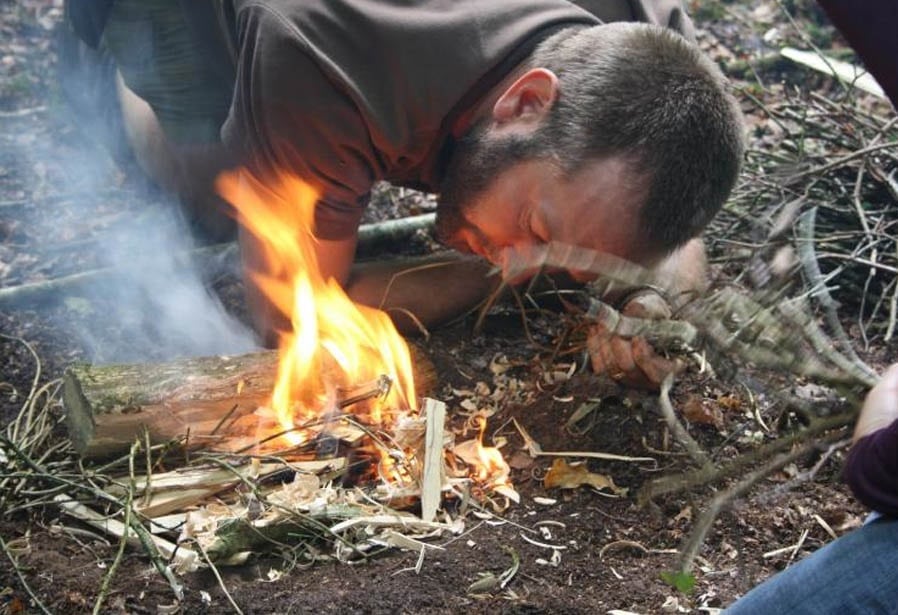
There are multiple ways of doing that but we’ll list the most known ones:
- You can use a lighter, a match and other simplistic and modern means if you have them at your disposal.
- You can use a flint stone that you strike or chip with a knife. The flint will spark and if a spark lands on a piece of tinder you will light it on fire.
- Alternatively, if you don’t have a flint stone or any other means, you could sacrifice a battery by shorting it out with metal contacts. If need be you can use the aglets (the metal bits at the end of your shoelaces) to short the batteries out causing them to spark. The problem is that the battery in question will be rendered useless afterwards.
Lighting a fire without a spark source
If you have no other means of lighting a fire at your disposal, you can choose a more primitive approach, however it will require a lot of elbow grease in order to work.
- Grab 2 sticks, a piece of tinder, a shoelace and a piece of wood.
- Use the shoelace and one of the sticks to create a small but taught bow. Wrap the string of the bow around the middle of the second stick.
- Now grab the plank or piece of wood that you set aside and carve out a small notch into the side. It should be more or less in the shape of a V.
- Place the piece of tinder in the notch, place one end of the stick that the bow is wrapped around on the bit of tinder and start spinning the stick in question by moving the bow forward and back.
- You will need to apply a lot of pressure on the stick, so you might want to use a rock to press on it.
- Keep rubbing the stick on the piece of tinder in the notch faster and faster until it starts to smoke and you can see the bit of tinder starting to glow.
- When it starts to glow, gently blow underneath it to light it up and place it into some more tinder. Keep blowing until the tinder lights up and then put it underneath the sticks and wood pieces that will form your camp fire.
Other Tips and Tricks
- Always be on the lookout and don’t be afraid to use discarded objects. One man’s trash can be another man’s treasure, and you might actually find some things randomly that you could use in order to survive.
- Don’t rush. Take your time, look around and make sure that the coast is clear and that there are no dangers nearby. Also remember to check the ground that you are walking on. The last thing that you want is to fall into a pit covered by leaves.
- If you find yourself in particularly thick forest, use your knife to mark trees along the way. This will help you stay on track as well as help potential rescuers find you.
- Be careful and mindful of the plants that you come into contact with. If something looks strange, feels even slightly off, or has weird pigmentation, steer clear of it.
A Few Final Words
As you can imagine, surviving in the forest is not easy, nor is it something to look forward to. However it is not impossible and it is not something that you will not be able to do.
[the_ad_group id=”23″]
All you have to do is keep your calm and your wits about you, manage your energy and your resources as well as keep your eyes wide open.

Keep all these things in mind and properly prepare yourself. Either willingly or not, if you find yourself in a survival situation, now you know what you will have to do in order to stay alive and make it out in one piece. Now we’re curious to know if something like this actually happened to you. Did you ever get lost in the forest?




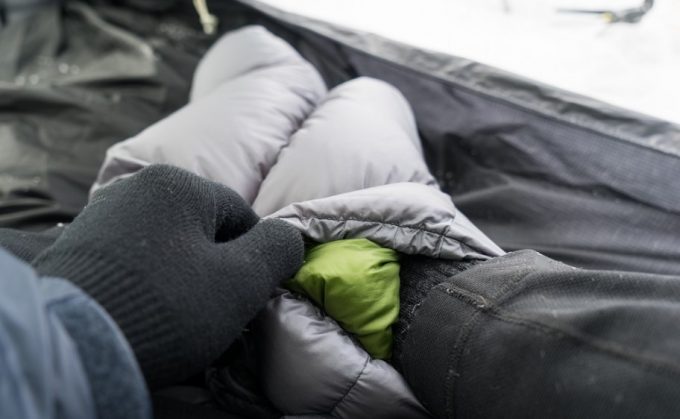
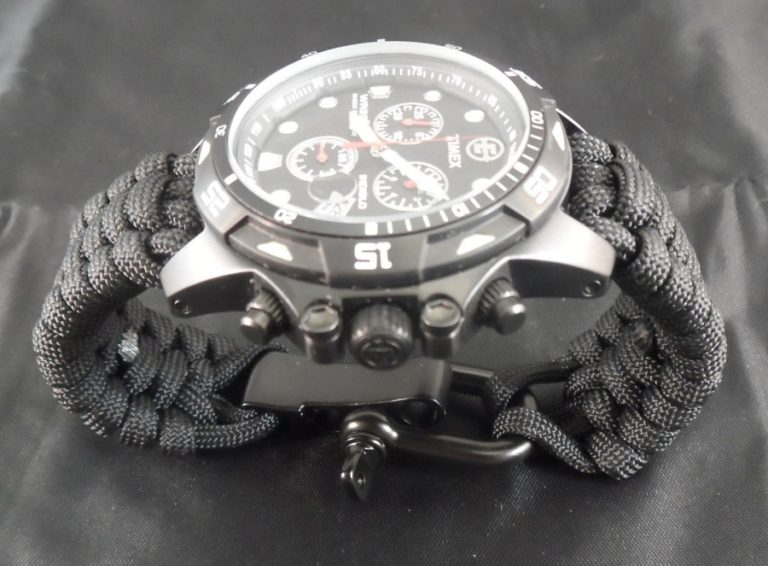
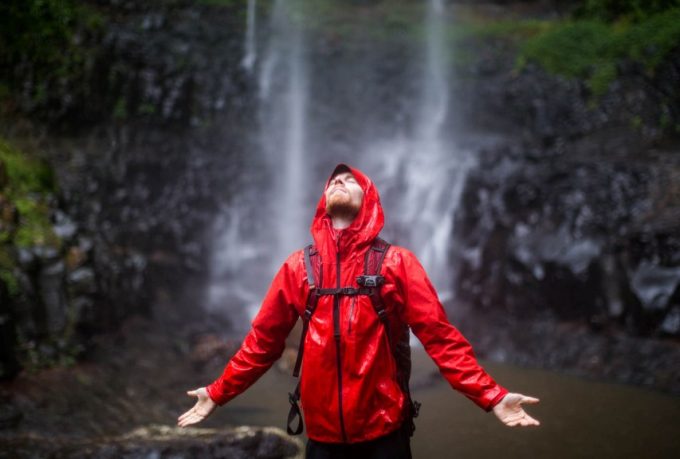
Here is another interesting and healthy recipe. If you’re in the middle of the woods and saw the lake or river with growing white lilies, then you can get the bread. Lilies rhizome contains 49% starch, 8% protein, and 20% sugar. Dried root, you need to grind it into flour. The flour put in running water. When the tannins wash off, it is necessary to dry. Finally, the flour is ready! It is possible to bake over fire or wrapped around stick bread strips. Also, you can add this ingredient to a soup.
The rhizomes are indeed packed with nutrients and can keep you full when you are running out of food sources. It also doesn’t taste bad, so I’d say this is a very great tip especially if you’re exploring areas where white lilies are abundant for rhizome collection.
Here is another interesting and healthy recipe. If you’re in the middle of the woods and saw the lake or river with growing white lilies, then you can get the bread. Lilies rhizome contains 49% starch, 8% protein, and 20% sugar. Dried root, you need to grind it into flour. The flour put in running water. When the tannins wash off, it is necessary to dry. Finally, the flour is ready! It is possible to bake over fire or wrapped around stick bread strips. Also, you can add this ingredient to a soup.
The rhizomes are indeed packed with nutrients and can keep you full when you are running out of food sources. It also doesn’t taste bad, so I’d say this is a very great tip especially if you’re exploring areas where white lilies are abundant for rhizome collection.
Survival in the woods for an inexperienced person is pretty hard, even without having stalwart health. Because wood is not like the city, you can’t find a food in the ruins of the shop, and will not take a refuge for the night in a dilapidated house . In addition to starving dogs and looters in a forest, it is possible to find the enemy that could harm you. Ticks, snakes, wild boars, wolves, bears and other animals though trying to avoid contact with people, however, can easily attack if it is left unchecked.
Vitality is a really important factor that will determine a person’s survivability in the wild. That’s why I really don’t recommend my colleagues and friends to go hiking or camping even if they are just feeling a little “funny” which can progress into a fever or flu.
Survival in the woods for an inexperienced person is pretty hard, even without having stalwart health. Because wood is not like the city, you can’t find a food in the ruins of the shop, and will not take a refuge for the night in a dilapidated house . In addition to starving dogs and looters in a forest, it is possible to find the enemy that could harm you. Ticks, snakes, wild boars, wolves, bears and other animals though trying to avoid contact with people, however, can easily attack if it is left unchecked.
Vitality is a really important factor that will determine a person’s survivability in the wild. That’s why I really don’t recommend my colleagues and friends to go hiking or camping even if they are just feeling a little “funny” which can progress into a fever or flu.